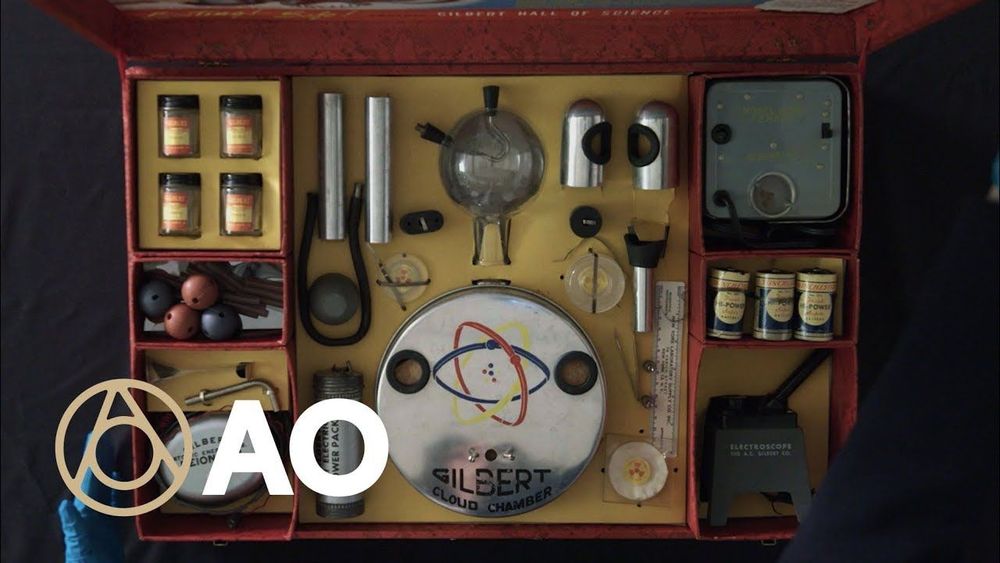What is spacetime? How do physicists describe it? How does it relate to quantum gravity? Thomas Hartman passionately pursues these mysteries.

What is spacetime? How do physicists describe it? How does it relate to quantum gravity? Thomas Hartman passionately pursues these mysteries.
Drugmaker Johnson & Johnson is “pretty confident” that it can create a vaccine to combat the deadly coronavirus, an exec said Monday.
Paul Stoffels, the company’s chief scientific officer, said it began working on a vaccine two weeks ago — and is hopeful that it can be developed within months, CNBC reported.
“We have dozens of scientists working on this so we’re pretty confident we can get something made that will work and stay active for the longer term,” Stoffels told CNBC’s “Squawk Box.”
One of Stephen Hawking’s predictions seems to have been borne out in a man-made “black hole.”
Even though we are led to believe that during the Cretaceous the Earth used to be an exclusive home for fearsome giants, including carnivorous velociraptors and arthropods larger than a modern adult human, it turns out that there was still room for harmless minute invertebrates measuring only several millimetres.
Such is the case of a tiny millipede of only 8.2 mm in length, recently found in 99-million-year-old amber in Myanmar. Using the latest research technologies, the scientists concluded that not only were they handling the first fossil millipede of the order (Callipodida) and also the smallest amongst its contemporary relatives, but that its morphology was so unusual that it drastically deviated from its contemporary relatives.
As a result, Prof. Pavel Stoev of the National Museum of Natural History (Bulgaria) together with his colleagues Dr. Thomas Wesener and Leif Moritz of the Zoological Research Museum Alexander Koenig (Germany) had to revise the current millipede classification and introduce a new suborder. To put it in perspective, there have only been a handful of millipede suborders erected in the last 50 years. The findings are published in the open-access journal ZooKeys.
Gilead Sciences said it is sending an experimental antiviral drug to China for emergency treatment of coronavirus patients as well as testing to see if it works against the virus.
Gilead Sciences Inc. said on Friday that it had provided doses of an experimental antiviral drug to doctors for the emergency treatment of a small number of patients infected by the new coronavirus.

Did product safety laws lead to the dumbing down of science toys?
“Users should not take ore samples out of their jars, for they tend to flake and crumble and you would run the risk of having radioactive ore spread out in your laboratory.” Such was the warning that came with the Gilbert U-238 Atomic Energy Lab, a 1950s science kit that included four small jars of actual uranium. Budding young nuclear scientists were encouraged to use the enclosed instruments to measure the samples’ radioactivity, observe radioactive decay, and even go prospecting for radioactive ores. Yes, the Gilbert company definitely intended for kids to try this at home. And so the company’s warning was couched not in terms of health risk but rather as bad scientific practice: Removing the ore from its jar would raise the background radiation, thereby invalidating your experimental results.
Continue reading “Fun—and Uranium—for the Whole Family in This 1950s Science Kit” »
What is Coronavirus According to the World Health Organization[i], Coronaviruses (CoV) are a large family of viruses that cause illness ranging from the common cold to more severe diseases such as Middle East Respiratory Syndrome (MERS-CoV) and Severe Acute Respiratory Syndrome (SARS-CoV).
What is 2019 Novel Coronavirus (2019-nCoV) The 2019 Novel Coronavirus (2019-nCoV) is a new strain of coronavirus that was first identified during an investigation into an outbreak in Wuhan, China. It’s important to note that how easily a virus spreads person-to-person can vary. Some viruses are highly contagious, while other viruses are less so. Investigations are ongoing to better understand the transmissibility, severity, and other features associated with 2019-nCoV, but there are indications that person-to-person spread is occurring[ii].
Know the Coronavirus Symptoms According to the CDC, patients with confirmed 2019-nCoV infections have reported mild to severe respiratory illnesses with symptoms including:
The outbreak of the Wuhan coronavirus in central China has infected thousands and spread overseas, raising the specter of a potential global epidemic as authorities desperately try to contain it.
Since the first case was identified in early December in Wuhan, capital of Hubei province, more than 5,900 people have fallen sick and at least 132 people have died in mainland China. In addition, there are dozens of confirmed cases in 17 locations outside of mainland China, including at least five in the United States.
The number of total cases worldwide now exceeds 6,000.
